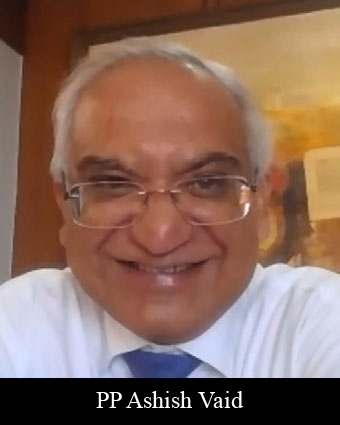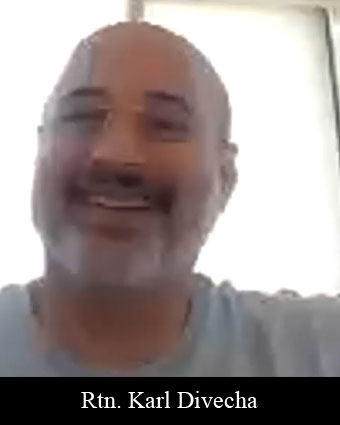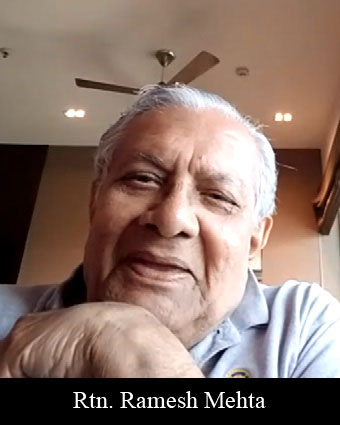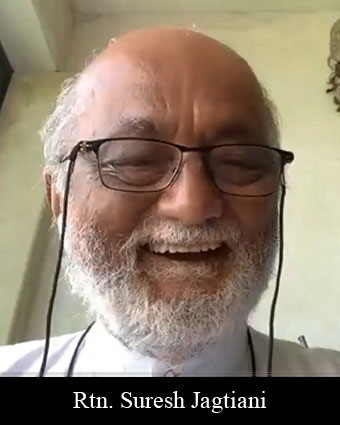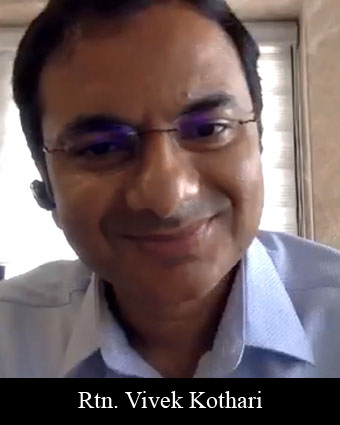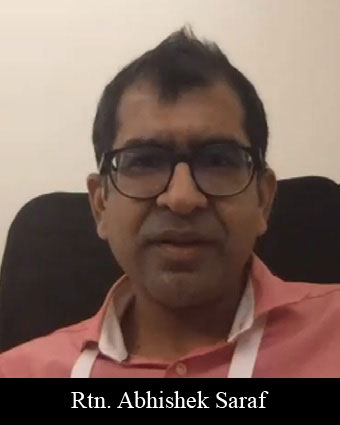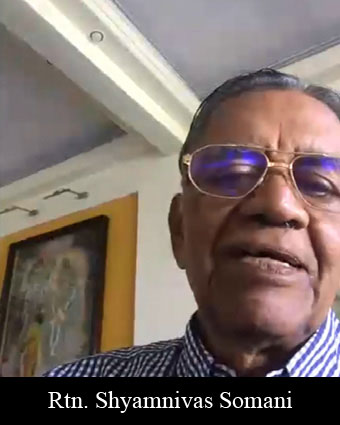
Last Tuesday, educationist Nitish Jain spoke about a hybrid form of education that combines both online and campus education
IN THE NEXT FIVE YEARS, HUMAN TEACHERS WILL GIVE WAY TO COMPUTERS THAT TEACH OR BOTS. WE, AT SP JAIN, HAVE ALREADY STARTED EXPERIMENTING WITH BOTS TO DO THE TEACHING.
Initially, they will teach simple things, gradually teaching more complex goals. Why should humans be replaced? Because BOTS can do the job better and more efficiently as well as at a lower cost. Technological advances will bring college fees down by 50 per cent because will do what humans do.
Humans may teach via VR or holograms which means the professor need not necessarily stand in front of you. Let’s imagine if you are in a small place in India, how do you expect a top AI specialist to teach you? Will he be able to travel to the interiors of a small city? But with VR and hologram technology, the person will be able to stand in front of you.
Education today is like ‘one size fits all’, which means you sit in a classroom with 50 students and everybody learns at the same pace in the same fashion and we all know that many of us learn in a different manner and at different grasping speeds. So, education as it becomes more computer-driven, will be more personalized and customized to the learner. For example, I love to make music videos, so I can use video content or if one says that I want to learn twice the speed, so education is being customized. It optimises the learning, the speed and the way people learn.
Today, learning is very structured. But, going forward, it will be unstructured. Education is so structured that it does not prepare us for the real world.
Going forward, education will also be unstructured in the coming years.
THERE ARE SOME IMMEDIATE CHANGES IN EDUCATION:
As we speak, online education is going to be far more effective than it was in the past. Today every university in the world has moved to online and therefore the quality and technology of online has all improved.
However, I don’t think students are ready for online; they say that they want the real and on-campus education. So, there will be a shift to a combination of online and offline education and that is called hybrid education.
I suspect that hybrid education will continue even after Covid because it will reduce the cost of education. You may say that you like the on-campus format of education but you may also say that maybe you can go there for one week out of a month, why go an entire month, and, thereby, that can be reduction in fees. That is going to be the trend going forward.
The focus will also shift from knowledge to skills. People of my age went to schools and colleges to gain knowledge: the more you attend college, the smarter you are. But that is no longer the case. With smartphones, the Internet has made us wiser than we are. But now the game has shifted to the skills. How quick can you apply that in the game?
Skills like critical thinking, communication, and teamwork – these are the kinds of skills that companies look for when hiring people.
Traditionally, exams tested memory or theory but today, increasingly, exams teach application. At SP Jain, every exam is an application. There is nothing like a theory question because it is the application that makes you apply the skills that we teach in the classrooms and it also makes exams fun. You hate exams because you are forced to sit long hours at night and memorize stuff and it was awful. Now you apply things making it fun and at the end of that you can have something useful, your exam paper can actually be something that you can refer to later on.
So, partial customisation has already begun. It is going to take baby steps and maybe in five years we will see a complete customisation.
WHY WAS ONLINE EDUCATION INVENTED?
It was born to supplement classroom education and not to replace it. It happened about two decades ago but became popular seven-eight years ago, popularised by MOOCS, Massive Open Online Courses. This started with Coursera and edX. Coursera was started by Stanford University and edX by Harvard and MIT.
They were designed to offer recorded classes or asynchronous. So MOOCS was largely asynchronous. What they did was a very clever concept, they had a Stanford Professor record his classroom and this recording then can be viewed by anyone wanting to learn that subject from the professor.
These classes were offered for free and were effective in the sense that they grew exponentially. But, thanks to MOOCS, online education carries the stigma of being cheap and ineffective because the completion rate of the MOOCS force is very low, at five per cent. So, 95 per cent of people start but do not complete the course because they can’t do it on their own. Most people need to be motivated to study because everything better comes up in life than learning. So, there is no motivation. When there is a physical classroom, there are class timings, so you have to be there on time, and it is disciplined. But the five per cent who are very motivated want their next job, so they complete the online course. As a result, online education carries the stigma of being ineffective.
Both synchronous as well as asynchronous teaching can be online. Asynchronous teaching involves recorded lectures, courses are offered free or at small cost especially when you have a certificate provided. It has a fatal flaw because if 95 per cent cannot complete, then what is the point? For certain courses, the completion rate is higher but not for all.
Synchronous learning is usually delivered by schools through Zoom. But Zoom, Skype and other such applications are good for meetings and webinars, but they were not really designed to be used in online teaching. They were designed more for office meetings of seven-eight people, or a webinar.
People say that they want a real classroom experience. Why? Because, in a real classroom, a Professor can see you, you can make eye contact, ask your doubts. But when you are on Zoom, you are not talking to the student, you are just generally talking. You cannot really make eye contact which students are used to. This this changes everything. Also, if there are more than 20-25 students on Zoom, you have to go to the next screen or you can’t see them all.
If you want to see their facial expressions, to know whether or not they are engaged, or to see what they are doing, that is difficult too. To replicate a classroom online, SPJ has developed the finest technology and one which has been appreciated all over the world. It is called Engaged Learning Online, ELO.
If you want to see their facial expressions, to know whether or not they are engaged, or to see what they are doing, that is difficult too. To replicate a classroom online, SPJ has developed the finest technology and one which has been appreciated all over the world. It is called Engaged Learning Online, ELO.
has special features that are not in normal classrooms. There is real-time polling for different situations while learning, making the class engaging.
The professor can make eye contact with even 60 students. It is expensive technology and has taken us over two years to develop it. There are robotic cameras and value-added features to help the class engage better.
SP Jain has five studios is four countries: India, Dubai, Singapore and Australia. So, a professor can teach live and can be employed from these countries to teach anywhere in the world. That enhances the technology as well as the quality of the faculty who teach the students.
Another concept is that of the borderless classroom. Why does one need four walls to deliver education? This has been our thinking, as we are growing, that physical space is important for education. With ELO technology, we can have real-life experiences for students around the world.
SPJ has tied up with different universities and these universities have given five-six students as a result of which, now, the classroom consists of students from all around the world including SPJ’s students. So they have a borderless experience because the students are not limited by geography and this can now expand. Not just students, but the faculty and guest speakers too are from around the world. They do not have to leave their country to give a lecture, so they don’t mind giving their half an hour. Many of them, both faculty as well as students, feel honoured.
Imagine a learning supply chain from a top faculty in the classroom and then applying it in the real world. After Covid, we have understood that online can be equally effective when it comes to listening to somebody and I think we have latched on to that thought and taken it forward with the borderless classroom. Even out-of-class activities are conducted by trainers from around the world. SP Jain had arranged Salsa classes from a trainer in Cuba.
ELO IS A GREAT IDEA BUT CAN THE STUDENTS SEE EACH OTHER AS WELL?
Absolutely. Students can see each other with what is called the room view. It is much like Zoom where you can see everyone and when the speaker speaks, it gets into the speaker view. You may see the presentations as well with other features. There can be a chat/challenge to engage with the students. Every student can answer.
CAN WE USE SUCH A TECHNOLOGY FOR ROTARY?
Yes but the speaker will have to come at our SPJ Mumbai studio, you cannot do it at the Taj hotel. But you won’t need it for a regular meeting because it is not a classroom experience.
WILL ONLINE EDUCATION BE MORE COST EFFECTIVE?
Absolutely, so when you run a college, there is so much hidden cost that is not apparent to most students. There are many things that people don’t need. So, the future will be unbundling of services and costs. There are too many costs in college; in an online you can choose according to your preference. Online education is also scalable. Many people expect immediate cost reduction but it doesn’t work like that. It is slow and steady progress.
CAN A TECHNOLOGY LIKE ELO PROVIDE FOR A KIND OF SOCIAL INTERACTION?
I am sure that during Covid days, we have got used to online education, courses and shopping. Many of us did not have that experience before. But, slowly, people are getting the hang of it. Online education has certain disadvantages as well. You cannot have your cake and eat it too. You cannot say you want online and you want to have the campus too. Just like Amazon can never replicate going to a physical mall, online education cannot replicate the real experience. But learning will be much superior than on campus.
There is euphoria now for online courses but when, six months later, all returns to normal and everything starts gradually, how do you think they will continue? Will there be a hybrid pattern there?
The answer lies somewhere in the middle. The answer is hybrid. One may say, why hybrid and not a campus like before? The reason is cost. Going to office has its own advantages and working from its own but a blend of the two will make it more optimum. You may go for two days a week, but the rest of the days you can work from home. Or, an alternative one week at campus and one week at home because the cost comes down.
DO YOU SEE TUITION FEES REDUCING FOR AMERICAN UNIVERSITIES LIKE HARVARD, PRINCETON AS WELL OR ONLY FOR CERTAIN UNIVERSITIES?
I am not sure, but I predict that no, because what you pay for is the snob appeal of going to Harvard. It’s for your alumni network, admission standards, faculty research at Harvard, none of these is changing so I doubt that Harvard or Ivy leagues would reduce the cost just because it is online. You go to Harvard in the first place because it is an exclusive club that is never going to become a mass market club. I heard Google is introducing its own degrees at a much low price, so the Harvards of the world may compete with the Googles of the world in the future. Because the Googles of this world can deliver education at the mass level, much more economically, 100 per cent online and still have that same kind of brand value of it being a Google degree. New models and players will evolve.

